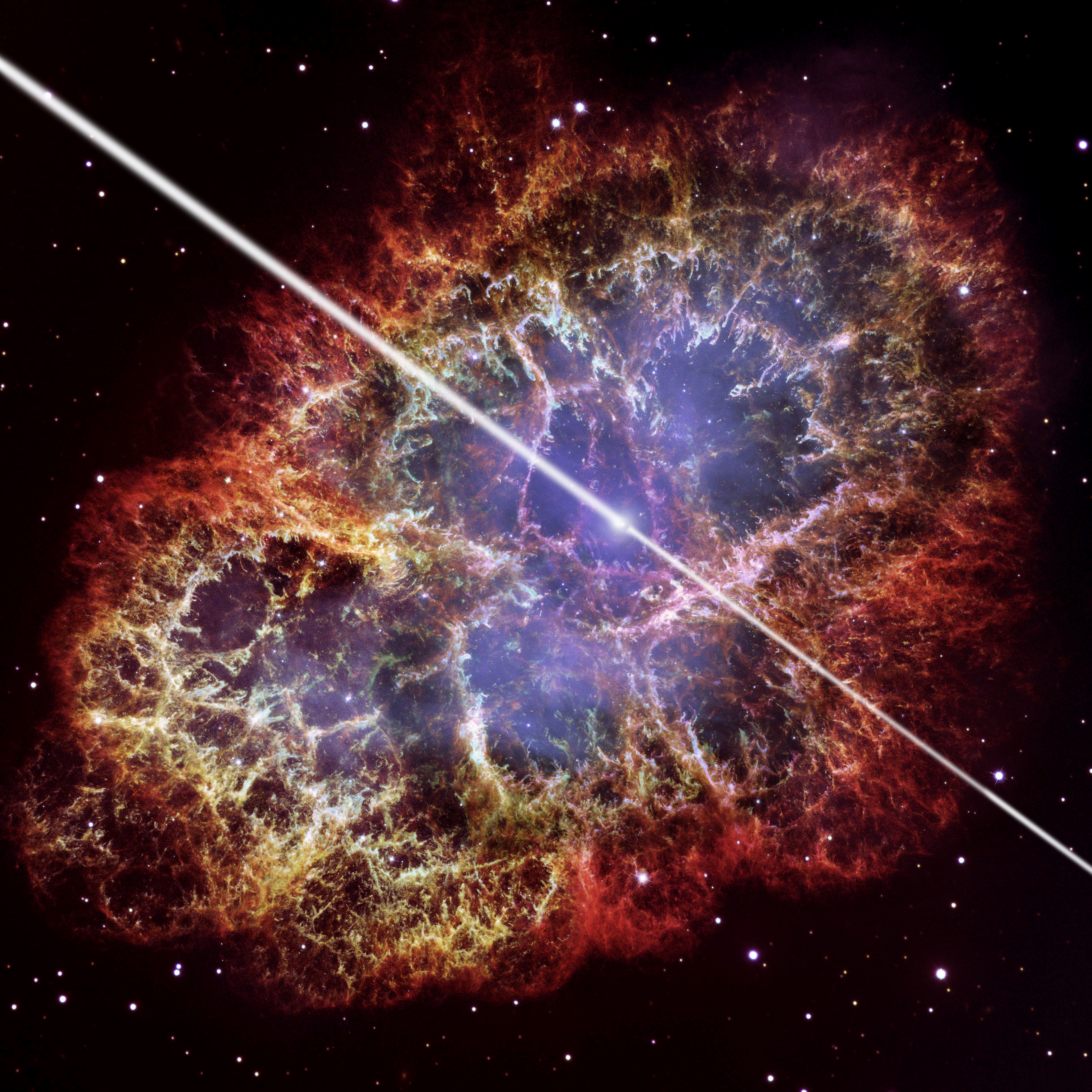NASA to Announce Spinning Star Discoveries Thursday

NASA will announce new discoveries about strange, super-dense spinning stars called pulsars on Thursday (Nov. 3).
The space agency will hold a press conference at 2 p.m. EDT (1800 GMT) on Thursday to discuss the new findings, which were made with the help of NASA's Fermi Gamma-ray Space Telescope, officials said in a media advisory.
Pulsars form when massive stars die in supernova explosions and their remnants collapse into compact objects made only of particles called neutrons. When a mass weighing as much as the sun is packed into a tiny space the size of a city, the conserved angular momentum causes the resulting neutron star to spin very rapidly, and to emit a ray of high-energy light that sweeps around like a lighthouse beam.
Astronomers can detect this light, making a pulsar the closest thing to a black hole that scientists can observe directly, officials said. Some pulsars spin at tens of thousands of revolutions per minute, faster than the blades of a kitchen blender.
Participants in Thursday's press conference are:
- Paulo Freire, astrophysicist, Max Planck Institute for Radio Astronomy in Bonn, Germany
- Pablo Saz Parkinson, astrophysicist, University of California at Santa Cruz
- Bruce Allen, director, Max Planck Institute for Gravitational Physics in Hanover, Germany
- Victoria Kaspi, physics professor, McGill University in Montreal
Follow SPACE.com for the latest in space science and exploration news on Twitter @Spacedotcom and on Facebook.
Breaking space news, the latest updates on rocket launches, skywatching events and more!

Space.com is the premier source of space exploration, innovation and astronomy news, chronicling (and celebrating) humanity's ongoing expansion across the final frontier. Originally founded in 1999, Space.com is, and always has been, the passion of writers and editors who are space fans and also trained journalists. Our current news team consists of Editor-in-Chief Tariq Malik; Editor Hanneke Weitering, Senior Space Writer Mike Wall; Senior Writer Meghan Bartels; Senior Writer Chelsea Gohd, Senior Writer Tereza Pultarova and Staff Writer Alexander Cox, focusing on e-commerce. Senior Producer Steve Spaleta oversees our space videos, with Diana Whitcroft as our Social Media Editor.
